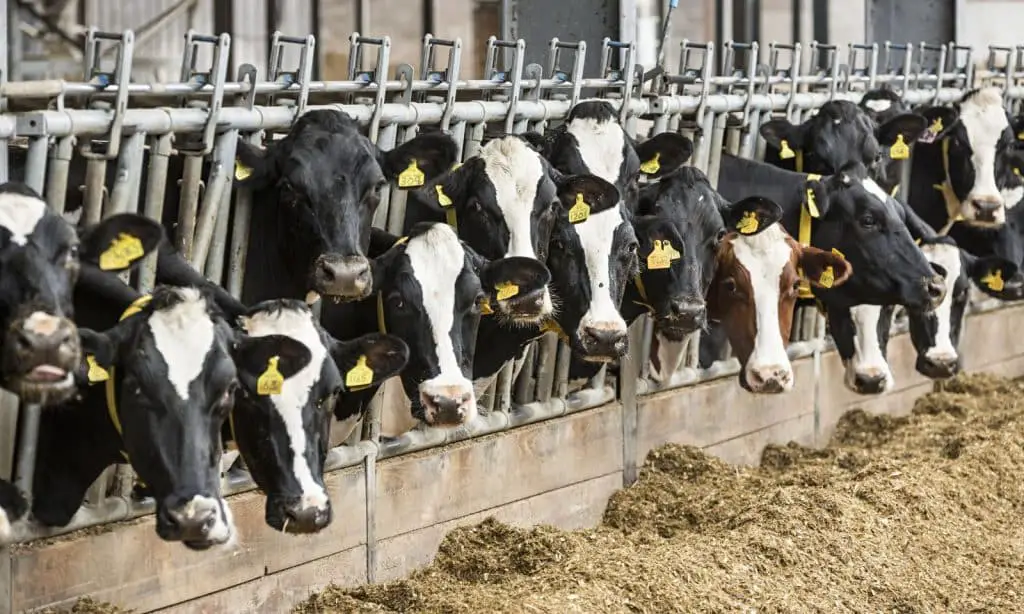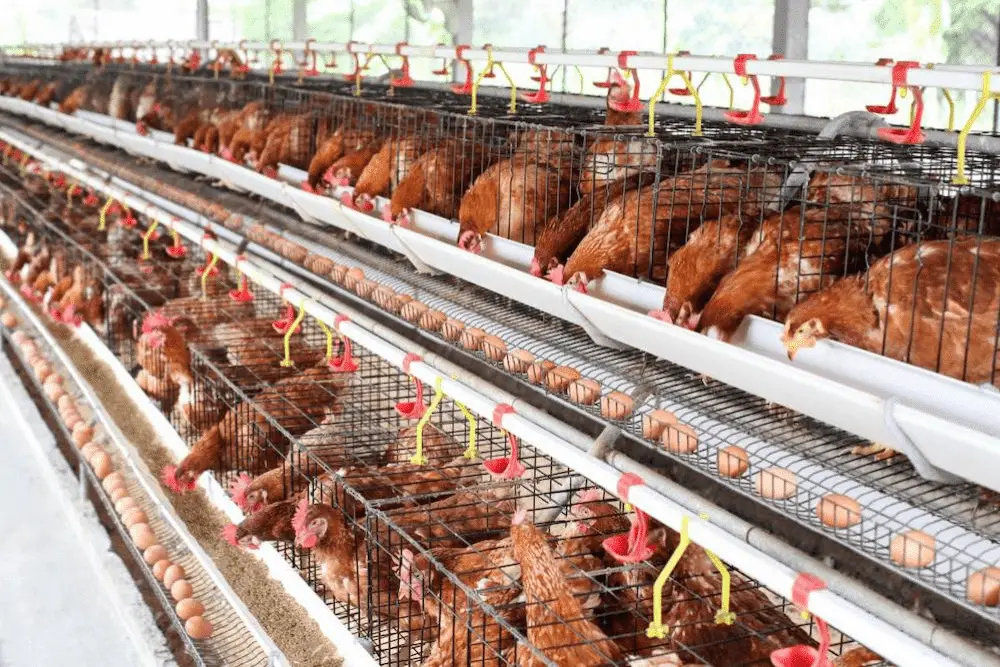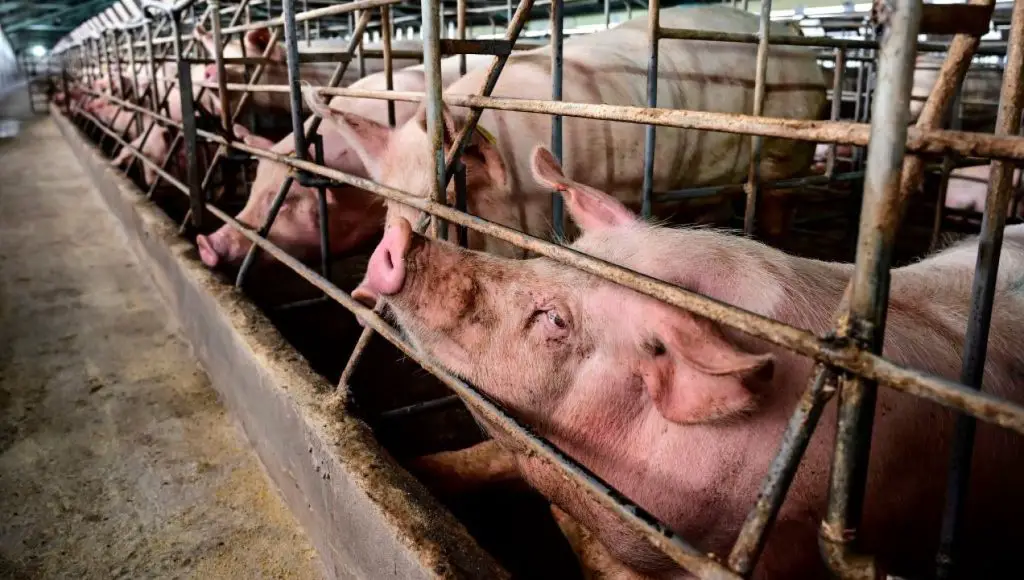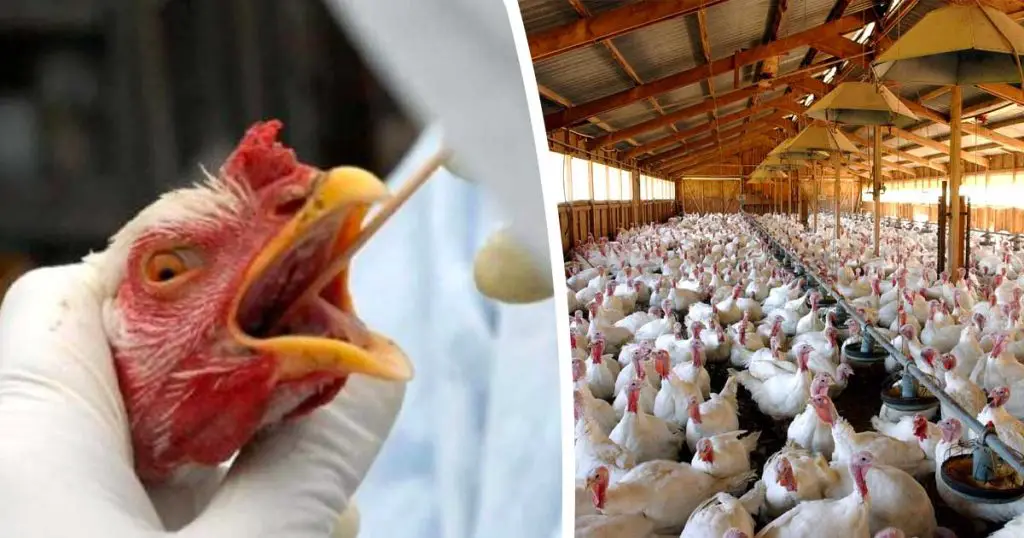Each of us knows where our meat, dairy products or eggs come from. After all, most product marketing encourages us to imagine pleasant countryside scenes, full of happy animals sunbathing in grassy fields. But today’s industrial agriculture landscape looks very different. Far from green pastures, it is made up of noisy windowless warehouses; intensive farms equipped with cages that barely allow the animals to move.
The mistreatment of animals in intensive farming
Factory farms, also known as concentrated animal feeding operations (CAFOs), are a form of intensive animal agriculture. Virtually all animal products in the United States are produced on factory farms, and although it originated in the United States, factory farming is becoming increasingly common around the world.
Industrial farming includes land-based farming involving animals such as pigs, cows, chickens and sheep. Aquaculture, in which large numbers of salmon and other fish are raised for food, is considered another form of intensive farming.
Factory farming operations are designed to produce large volumes of crops at the lowest possible price. Animals need constant supplies of food, water and shelter to grow enough to be slaughtered or to produce milk or eggs for human consumption.
Intensive farming is the result of techniques to keep animals alive (and produce them) at the lowest possible costs, using cost-saving measures such as smaller cages and extreme confinement. Unfortunately, this means that animals, along with industry workers and our environment, end up paying the price.
Intensive farming has a significant impact on animal life. Because farmed animals are legally considered property of the companies to which they “belong,” animals are treated more like machines than the sensitive, emotional, and intelligent individuals they are.

Animals bear the brunt of cost-cutting measures on factory farms. Throughout their short lives, they are unable to engage in their natural behaviors: they are mutilated and operated on without anesthesia; and/or are forcibly impregnated over and over again, only to have their offspring ripped away from them.
In the intensive farming, animals are subjected to routine mutilations, endure extreme confinement, and are otherwise manipulated for the benefit of human consumers. In general, all these practices are harmful to animals.
A life of confinement is unnatural and difficult for any animal to bear. In intensive farming, however, confinement is taken to extremes. Cows destined to become meat may roam outdoors for part of their short lives. Again, they are crammed together on farms, where they are forced to stand in their own feces.
Other species are not so lucky. Many are kept indoors for their entire lives. Laying hens used in egg production are often confined to battery cages. These small wire cages give each bird the same amount of space as the size of a piece of printer paper and are typically about 35cm tall.
Birds can’t even open their wings without hitting the sides of the cage or another bird. Battery cages essentially frustrate all of a chicken’s natural behaviors, including dust bathing, nesting, and scratching.
Breeding sows, another name for female pigs used by the pork industry, also face extreme confinement on factory farms.
Sows are confined to gestation crates, cages not much larger than their bodies, during their four-month pregnancy and after giving birth. The sows are unable to even turn around to meet their offspring, who are permanently taken away from them after a few weeks.

Gestation crates cause numerous welfare violations, as a result, some countries have banned the devices. The United States is one of the countries that continues to use gestation crates.
Chickens on factory farms suffer mutilations at the very beginning of their lives. When they are no more than a few hours old, the chicks are sent to a beaking machine, which cuts off parts of the chick’s upper and lower beak. Debecking is intended to prevent birds from pecking each other. Pecking causes injury and sometimes death in other birds.
Yet these behaviors are only common in intensive farming. They are thought to arise in part due to the chronic stress to which these conditions give rise. Aside from the initial pain caused by debeaking, there is evidence to suggest that chickens continue to endure chronic pain long after the procedure has been completed.
Tail docking refers to the removal of part or most of an animal’s tail. The procedure is performed on intensive farms largely without any anesthetic. Tail docking is intended to dissuade pigs from biting each other’s tails. This aims to address behaviors observed only within the intense confinement on factory farms.
Tail docking in cows is done to reduce disease transmission and make milking more convenient for dairy workers. These claims hold little weight when compared to the pain and other health complications suffered by cows.
Through selective breeding and other genetic manipulation techniques, various traits are amplified in farmed animals so that their bodies are more attractive to human consumers or their milk production is increased, which increases companies’ profits agricultural. Examples of genetic manipulations of farm animals include:
•Chickens that develop larger pectoral muscles (breast meat)
•Cows that produce greater quantities of milk
•Pigs grow larger in shorter periods of time

What is considered inhumane and violent can vary widely. Often, factory farming companies claim that animals are well cared for on factory farms, while animal advocates tend to believe that factory farming is riddled with inhumane treatment of animals.
The act of confining an animal for life and preventing it from seeing sunlight or the night sky can be seen as an act of violence.
Killing animals that are still puppies, such as chickens, pigs, lambs, calves and beef cattle, can be considered violent and inhumane. Repeatedly forcibly impregnating animals, denying mothers any ability to interact with their offspring, can also be an act of violence.
Although the concept of humane treatment tends to be subjective, it seems clear that factory farming is based on violence and the inhumane treatment of animals.
How animals are killed in intensive farming
Factory farming often puts profit before welfare when it comes to ending the lives of animals. In many slaughterhouses, processing lines move so fast that animals endure more cruelty than they should, usually improperly stunned before subsequent killing steps. The speed of processing lines also harms workers, who are at risk of greater injury when the animals are still alive and flailing as they are killed.
In many slaughterhouses, cows are driven into the barn and their heads are clamped in a vice. They are then shot in the head with a captive bolt pistol, a weapon equipped with a retractable projectile. This gunshot is designed to make cows numb to pain before they are hung upside down by their legs and slaughtered. Eventually they are dismembered.

Fish are often killed with a blow to the head. Many others are left to asphyxiate. However, this method is increasingly considered inhumane, as fish can remain conscious for minutes or hours after being removed from the water, and increasing research shows that they feel pain.
The pigs are herded into a barn where they are shot in the head. They are shot with a stun gun instead of a captive bolt gun. Pigs can also be killed with CO2 gas. While this method is often touted as more humane, it still causes significant amounts of pain to pigs.
Chickens are commonly killed by the so-called live chain slaughter method. First they are hung upside down with their legs attached to metal brackets, which often causes broken bones. The chickens are then immersed in a tank of electrified water designed to stun them before their throats are slaughtered and their bodies thrown into the boiling water.
Many chickens are not stunned effectively and end up drowning in boiling water or dying from blood loss.
Are intensive farming still necessary?
Factory farming harms animals, people and the environment, and many advocates believe it is no longer defensible, especially given the growing number of plant-based alternatives to meat and dairy.
Below are some statistics that illustrate the cruelty present in factory farming:
Pneumonia is common among factory-farmed pigs, with one report finding infection rates of 80%.
About 30% of broiler chickens are unable to walk properly due to genetic manipulation.
5 to 10% of hens die during “forced molts,” in which laying hens are deprived of food and water to force them to continue laying eggs.
Some laws exist to protect animals from certain abuses on factory farms, however, these laws are generally inadequate and generally allow abuse to continue. In the United States, livestock welfare laws are particularly lax.
At certain times in their lives, farmed animals are transported from farms to slaughterhouses. This transportation is known to cause stress in animals. The 28-hour law states that animals must not be transported for more than 28 consecutive hours, after which they must be unloaded from the truck, usually in pens or stables. Companies can request to extend the transportation period up to 36 hours.

The Humane Slaughter Act requires that animals be treated humanely in slaughter facilities. This law does not apply to chickens or other birds, leaving billions of animals vulnerable to cruelty in slaughterhouses.
In general, factory farms are run by well-funded companies that have close ties to influential politicians and pressure groups. In the United States, factory farms are also protected from scrutiny by so-called “ag-gag” laws, which criminalize the gathering of evidence and documentation of factory farm conditions by activists and members of the media.
While no federal ag-gag laws currently exist, some states have passed forms of ag-gag laws. These laws came largely in response to undercover investigations at agricultural facilities.
Every year, billions of animals endure cruel conditions on factory farms. As long as there is demand for cheap meat, dairy and eggs, factory farming will continue to dominate the rural landscape of countries around the world.
But there are many ways you can take action to help change the factory farming industry and prevent systemic cruelty to animals. The movement to end some of the cruelest practices, including battery cages for chickens, is growing every day.
#Intensive #farming #meat #eat #worth #suffering #suffered #animals